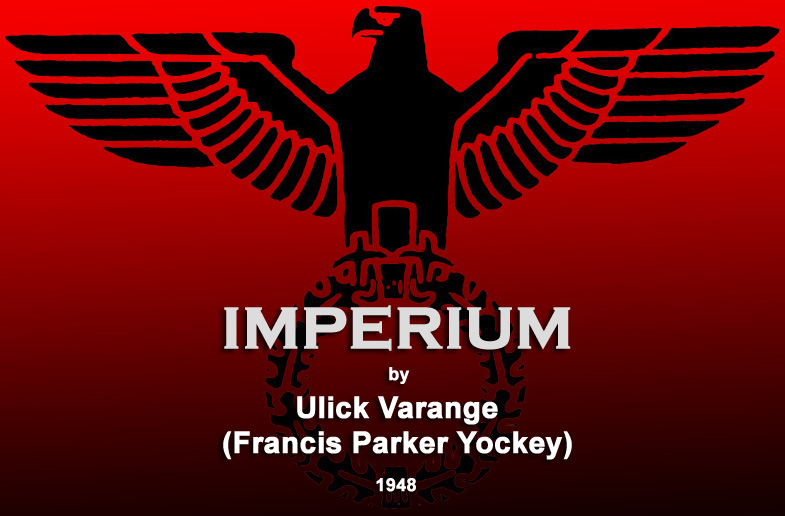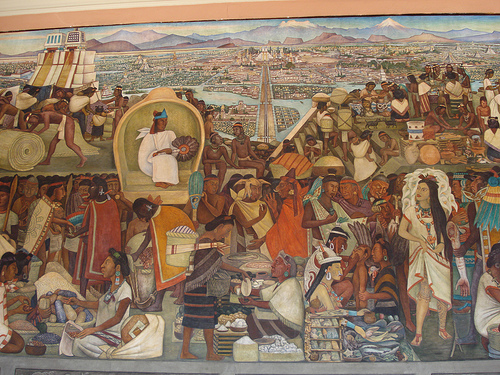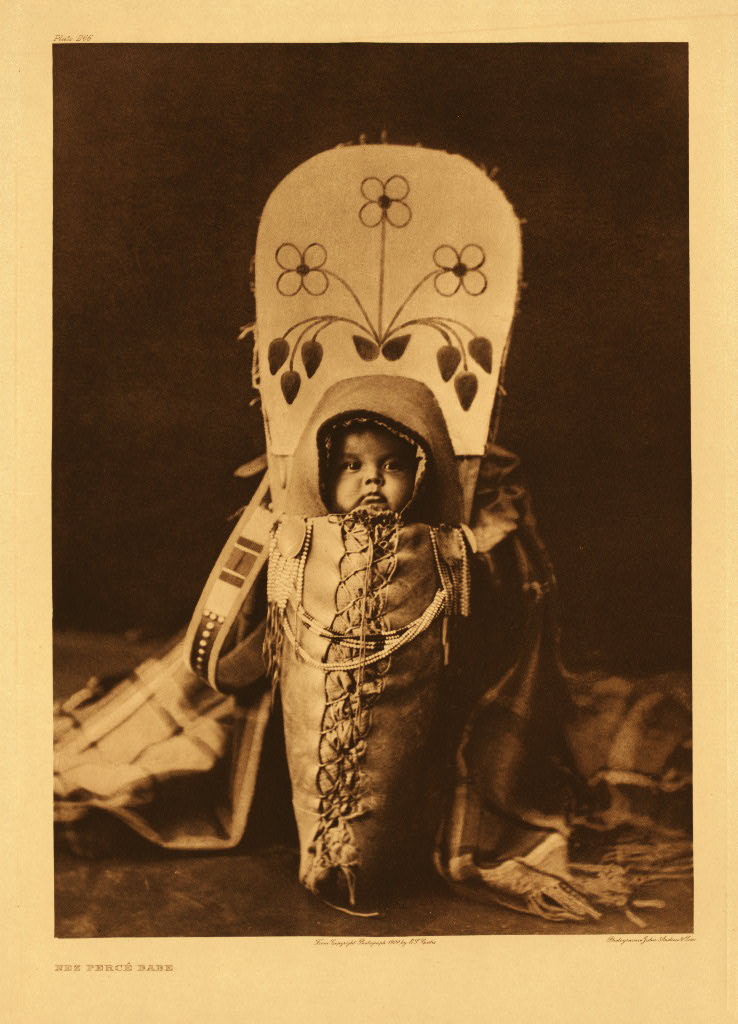Note of September 2017: I have removed this text because a slightly revised version of it is now available in print within my book Day of Wrath.
Category: Philosophy of history
A book dedicated “To the hero of the Second World War”
The 20th Century Historical Outlook
The Demise of the Linear View of History

No ellipsis
added between
unquoted paragraphs:
Life is a continuous battle between Young and Old, Old and New, Innovation and Tradition. Ask Galileo, Bruno, Servetus, Copernicus, Gauss. All of them represented the Future, yet all were overcome, in one way or another, during their own lives, by the enthroned Past. Copernicus was afraid to publish during his lifetime, lest he be burned as heretic. Gauss only revealed his liberating discovery of non-Euclidean geometries after his death, for fear of the clamor of the Boeotians. It is therefore not surprising when the materialists persecute, by maligning, by conspiracy of silence, cutting off from access to publicity, or by driving to suicide, as in the case of Haushofer, those who think in 20th century terms and specifically reject the methods and conclusions of 19th century materialism.
Even in the Italian Renaissance, Francesco Pico wrote against the mania for the Classical: “Who will be afraid to confront Plato with Augustine, or Aristotle with Thomas, Albert, and Scotus?” Savonarola’s movement also had cultural, as well as religious, significance: into the bonfires went the Classical works. The whole Classicist tendency of the Italian Renaissance has been too heavily drawn: it was literary, academic, the possession of a few small circles, and those not the leading ones in thought or action.
And yet this movement has been put forward as the “link” between two Cultures that have nothing in common in order to create a picture of History as a straight line instead of as the spiritually parallel, pure, independent, development of High Cultures.
A book dedicated “To the hero of the Second World War”
The 20th Century Historical Outlook
The Meaning of Facts

No ellipsis
added between
unquoted paragraphs:
Some men have a greater inner need to think abstractly than others.
For one of the characteristics of Life-facts is that distance–particularly temporal distance–shows up their lineaments more clearly. We know more of Imperial history than Tacitus knew, more of Napoleonic history than Napoleon knew, vastly more of the First World War than its creators and participants knew, and Western men in 2050 will know our times in a way that we can never know them.
A book dedicated “To the hero of the Second World War”
The 20th Century Historical Outlook
The Relativity of History

No ellipsis
added between
unquoted paragraphs:
Just as the Western Culture has the most intensely historic soul, so does it develop men with the greatest historical sense. It is a Culture which has always been conscious of its own history.
The fact that the Culture was continually changing meant that History was continually changing. History is the continuous reinterpretation of the Past. Truth in the religio-philosophical-mathematical sense, meaning timelessly, eternally valid, dissociated from the conditions of Life, does not pertain to History. History that is true is History that is effective in the minds of significant men.
The determining thing in our outlook on History is the Spirit of our Age. Ours is an external, factual, skeptical, historical, Age. It is not moved by great religious or critical feelings. Ours is the first age in Western history in which an absolute submission to facts has triumphed over all other spiritual attitudes. Previous ages in Western history formed their History to fit their souls; we do the same, but our view has no precedent ethical or critical equipment in it. On the contrary—our ethical imperative is derived from our historical outlook and not vice versa.
A book dedicated “To the hero of the Second World War”
The 20th Century Historical Outlook
The Two Aspects of History

No ellipsis
added between
unquoted paragraphs:
Men are thus differentiated also with regard to their capacity for understanding History. There is an historical sense, which can see behind the surface of history to the soul that is the determinant of this history. History, seen through the historical sense of a human being, has thus a subjective aspect. This is the first aspect of History.
The other, the objective, aspect of History, is equally incapable of rigid establishment, even though at first glance it might seem to be. The writing of purely objective history is the aim of the so-called reference, or narrative, method of presenting history. Nevertheless, it inevitably selects and orders the facts, and in this process the poetic intuition, historical sense, and flair of the author come into play. If these are totally excluded, the product is not history-writing, but a book of dates, and this, again, cannot be free from selection.
Nor is it history. Nor is impartiality possible. It is the historical sense which decides importance of past developments, past ideas, past great men. For centuries, Brutus and Pompey were held to be greater than Caesar. Around 1800, Vulpius was considered a greater poet than Goethe. Mengs, whom we have forgotten, was ranked in his day as one of the great painters of the world. Shakespeare, until more than a century after his death, was considered inferior as a playwright to more than one of his contemporaries. El Greco was unnoticed 75 years ago. Cicero and Cato were both held, until after the First World War, to be great men, rather than Culture-retarding weaklings. Joan of Arc was not included in Chastellain’s list, drawn up on the death of Charles VII, of all the army commanders who fought against England. Lastly, for the benefit of readers of 2050, I may say that the Hero and the Philosopher of the period 1900-1950 were both invisible to their contemporaries in the historical dimensions in which you see them.
What then, is History? History is the relationship between the Past and the Present. Because the Present is constantly changing, so is History. Each Age has its own History, which the Spirit of the Age creates to fit its own soul. With the passing of that Age, never to return, that particular History picture has passed. Seen from this standpoint, any attempt to write History “as it really happened” is historical immaturity, and the belief in objective standards of history-presentation is self-deception, for what will come forth will be the Spirit of the Age.
A book dedicated “To the hero of the Second World War”
The 20th Century Historical Outlook
Perspective

No ellipsis
added between
unquoted paragraphs:
Far out in exterior darkness where no breath stirs, no light shines, and no sound is heard, one can glance toward this spinning earth-ball. In the astral regions, illumination is of the soul, hence all is dark but this certain star, and only a part of it is aglow. From such a distance, one can obtain an utterly untrammeled view of what is transpiring on this earth-ball. Drawing somewhat closer, continents are visible; closer yet, population-streams. One focal point exists whence the light goes forth in all directions. It is the crooked peninsula of Europe. On this tiny pendant of the great land-mass of the earth-ball, the greatest intensity of movement exists. One can see—for out here the soul and its emanations are visible—a concentration of ideas, energy, ambition, purpose, expansiveness, will-to-form. Hovering above Europe we can see what never before was so clearly visible—the presence of a purely spiritual organism.
The primitive cultures are the sole thing existing above the plane of economics, in that they attribute symbolic significance to natural occurrences and human conduct. But there is nothing in these movements resembling the High Cultures which transformed the entire appearance of the Egyptian and Babylonian landscapes for almost forty generations from their first beginning until the last sinking.
Physical time flows on and centuries pass in darkness. Then, precisely as in Egypt and Babylonia, but again of a different hue, and to different music, a light appears over the Punjab. It becomes bright and firm. The same wealth of forms and significant happenings work themselves out as in the earlier two organisms. Its creations are all in the highest degree individual, as different from its two predecessors as they were vis-à-vis one another, but they follow the same grand rhythms. The same multi-colored pageant of nobles and priests, temples and schools, nations and cities, arts and philosophies, armies and sciences, letters and wars, passes before the eye.
II
Before this high culture was well on its way, another had started to actualize itself in the Hwang-Ho valley in China. And then a few centuries later, about 1100 B.C in our way of reckoning, the Classical Culture begins on the shores of the Aegean. Both of these cultures have the stamp of individuality, their own way of coloring and influencing their terrestrial creations, but both are subject to the same morphology as the others observed.
As this Classical Culture draws to its close, around the time of Christ, another one appears in a landscape subjugated by the Classical in its last expansive phase—Arabia.
In its later, expansive phase, this culture embraced European Spain as the Western Caliphate. Its life span, its end form, its last great crisis—all followed the same organic regularity as the others. Some five centuries later the now familiar manifestations of another High Culture begin in the remote landscapes of Mexico and Peru. It is to have the most tragic destiny of any we have yet seen. Around 1000 A.D. the European Culture is meanwhile born, and at its very birth shows itself to be distinguished from the others by the extraordinary intensity of its self-expression, by its pushing into every distance both in the spiritual realm, and in the physical.
Within the [Western] Culture arose Gothic Christianity, the transcendent symbols of Empire and Papacy, the Gothic cathedrals, the unlocking of the secrets of the world of the soul and the world of nature in monastery cells. The Culture-soul shaped for its own expression the nations of the West.
Life slowly externalizes: political problems move into the center; new economic resources are developed to support the political contests; the old agricultural economy metamorphoses into an industrial economy. At the end of this path stands a ghostly and terrifying Idea: Money. Other Cultures also had seen this phenomenon appear at the same stage and grow to similar dimensions. Its slow growth in importance proceeds pari passe with the gradual self-assertion of Reason against Faith. It reaches its highest point with the Age of Nationalism, when the parts of the Culture tear one another to bits, even as outer dangers loom threateningly. At its highest point, Money, allied with Rationalism, contests for the supremacy over the life of the Culture with the forces of State and Tradition, Society and Religion. In our brief visit to interstellar space, we found the position of detachment whence we could see this grand life-drama unfold itself seven times in seven High Cultures, and we saw each of the seven surmount the last great crisis of two centuries’ duration.
The great crisis of the West set in forcefully with the French Revolution and its consequent phenomena. Napoleon was the symbol of the transition of Culture into Civilization—Civilization, the life of the material, the external, of power, giant economies, armies, and fleets, of great numbers and colossal technics, over Culture, the inner life of religion, philosophy, arts, domination of the external life of politics and economics by strict form and symbolism, strict restraint of the beast-of-prey in man, feeling of cultural unity. It is the victory of Rationalism, Money and the great city over the traditions of religion and authority, of Intellect over Instinct.
We had seen all this in the previous high cultures as they approached their final life-phase. In each case the crisis had been resolved by the resurgence of the old forces of Religion and Authority, their victory over Rationalism and Money, and the final union of the nations into an Imperium. The two-century-long crisis in the life of the great organism expressed itself in gigantic wars and revolutions. All the Cultural energy that had previously gone into inner creations of thought, religion, philosophy, science, art-forms, great literature, now goes into the outer life of economics, war, technics, politics. The symbolism of power succeeds to the highest place in this last phase.
III
Since a Culture is organic, it has an individuality, and a soul. Thus it cannot be influenced in its depths from any outside force whatever. It has a destiny, like all organisms. Because it has a soul, all of its manifestations will be impressed by the same spiritual stamp, just as each man’s life is the creation of his own individuality. Because it has a soul, this particular culture can never come again after it has passed. Like the nations it creates to express phases of its own life, it exists only once. There will never be another Indian culture, Aztec-Mayan Culture, Classical Culture, or Western Culture, any more than there will be a second Spartan nation, Roman nation, French or English nation. Since a Culture is organic, it has a life-span. We observed this life span: it is about thirty-five generations at highest potential, or about forty-five generations from its first stirrings in the landscape until its final subsiding.
Like each man, a Culture has ages, which succeed one another with rhythmic inevitability. They are laid down for it by its own organic law, just as the senility of a man is laid down at his conception.
Scientific thinking is at the height of its power in the realm of matter, that which possesses extension, but no direction. Material happenings can be controlled, are reversible, produce identical results under identical conditions, are recurrent, can be classified, can be successfully comprehended as though they are subject to an a priori, mechanical, necessity, in other words, to Causality. Scientific thinking is powerless in the domain of Life, for its happenings are uncontrollable, irreversible, never-recurring, unique, cannot be classified, are unamenable to rational treatment, and possessed of no external, mechanical necessity. Every organism is something never seen before, that follows an inner necessity, that passes away, never to reappear.
Fate is not synonymous with destiny, but the opposite to it. Fate attributes necessity to the incidents of a life, but Destiny is the inner necessity of the organism. An incident can wipe out a life, and thus terminate its destiny, but this event came from outside the organism, and was thus apart from its destiny. Even the most inorganic thinker or scientifico, the crassest materialist or mechanist, is subject to his own destiny, his own soul, his own character, his own life span, and outside this framework of destiny his free, unbound flight of causal fancy cannot deliver him.
Note of September 2017: I have removed this text because a slightly revised version of it is now available in print within my book Day of Wrath.

